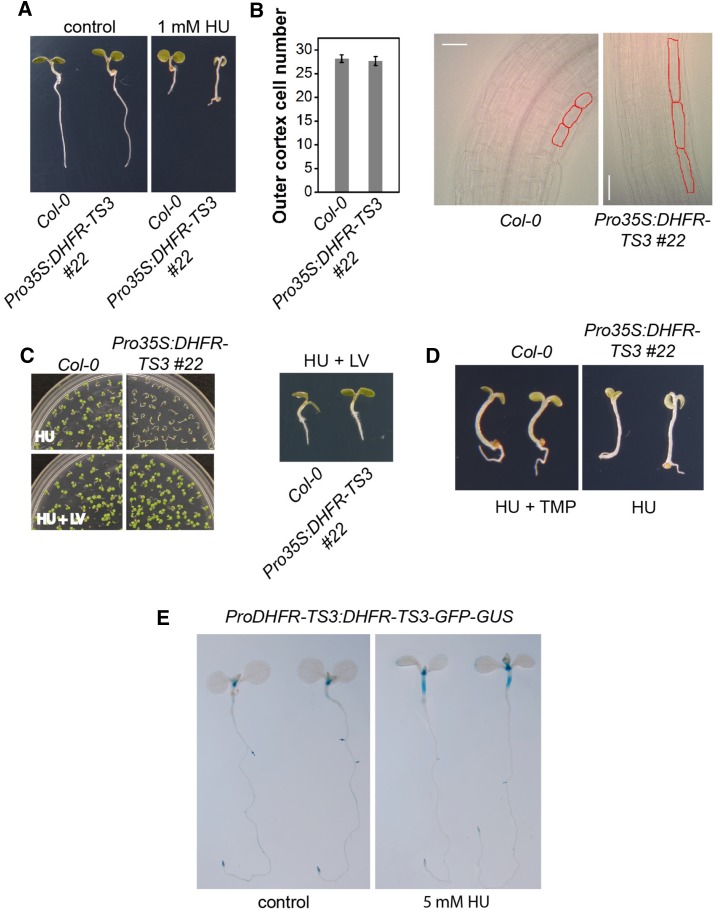Figure 8.
Pro35S:DHFR-TS3 Gain-of-Function Plants Show Elevated Sensitivity to HU and TMP.
(A) Representative phenotypes of wild-type and Pro35S:DHFR-TS3 seedlings grown for 4 d on control and 1 mM HU-containing media.
(B) DIC microscopy images of 4-d-old Pro35S:DHFR-TS3 and wild-type seedlings grown on 1 mM HU; outer cortex cells are outlined in red. The graph represents the number of outer cortex cells of wild-type and Pro35S:DHFR-TS3 4-d-old seedlings grown on 1 mM HU. Data are mean of at least 20 measurements ± sd.
(C) Administration of 500 µM folinic acid (LV) restores wild-type phenotype on HU. Upper panel: Wild-type and Pro35S:DHFR-TS3 grown on 1 mM HU (upper picture) and 1 mM HU + 500 µM folinic acid (lower picture) containing media for 6 d. Lower panel: Representative phenotypes of wild-type and Pro35S:DHFR-TS3 seedlings grown for 6 d on medium containing 1 mM HU and 500 µM folinic acid.
(D) Comparison of representative phenotypes of 4-d-old wild-type and Pro35S:DHFR-TS3 seedlings grown on 1 mM HU + 30 µM TMP and 1 mM HU containing media, respectively.
(E) GUS activity in ProDHFR-TS3:DHFR-TS3-GFP-GUS seedlings grown on MS/2 for 7 d and transferred to control (left) or 5 mM HU containing liquid MS/2 (right) for 5 h.

